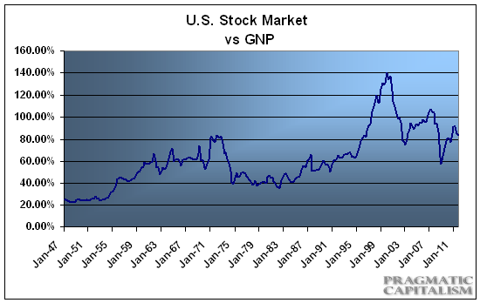I have been reading my earliest postings, some are worth reposting again. This was back in October 2005, gawd its nearly 7 years already, many people would have had two failed marriages within that period of time. The long standing argument of whether we want foreign institutions in our market or not is a good issue to debate. It forces us to think rationally whether we "need" them or not.

To me, its not that we need them, but it is a reflection of the "openness" of our capital markets. Secondly it is also a reflection of the "number of sizable big growth companies" that are attractive enough for them to consider putting into their portfolio. Thirdly, its the "niche exposure that some of our companies avail to international investors", do we have the necessary industry specific companies, that holds sway with international investors. To those ends, we need international investors as a gauge.
What we shouldn't be doing is to attract foreign funds just for the sake of foreign funds. We need not have them telling us what is our worth, we should be better investors ourselves.
What is this fixation with certain Malaysians that foreign funds MUST/SHOULD buy Malaysian stocks... is it a patriotic kind of thing, somehow "they love us more" if they do,... and if they don't buy, it means "we are not worthy... enough". Get out of the pre-independence, second class citizenry, developing country mentality. Stock markets are just a structure where shares are bought and sold, whether foreign funds come in or not DOES NOT mean we are running companies with "world's best practices/standards" or we are making strong strides in the respective industry's competitive landscape. NO, it does not mean that, one way or another.
People buy stocks if they think it is going to make them money - even if we have very good companies, people might not buy because we might be overvalued already. There are tons of options for the global investors, and Malaysian market is just a little thing. Get over yourself... do you know how big is the Malaysian stock market?? Take just ONE, any one of the top 10 market cap stocks in the US - it is bigger than the total market cap of all 1,000 companies listed in Malaysia. Now we are small, it does not mean we are "nothing", that is the reality. Here we have certain reporters and commentators crying wolf and trying to find hidden motives and agenda for Malaysian stocks NOT being on the radar, .... hey, anyone who blinks will miss the KLSE.
As a matter of fact, foreign funds ignoring smaller markets could be perceived as a good thing! Foreign investors will only but if they think they can make money. If they cannot, maybe the Malaysian stockmarket is fully valued or over-valued... or it could mean that the local funds/institutions and local private investors have "snapped" up all bargains - leaving no room for good stocks to be "under-valued". In other words, we could also argue that when foreign funds/research issue BUY on a certain country - that its because the local funds/institutions and local private investors are NOT SAVVY enough to pick up under-valued stocks. So which is which... a back-handed compliment??!!

It is a good thing to compare our performance with other markets to improve our ways, but don't get emotional about it. Its just stock prices not the price of my self dignity or the price of our children ... get a better perspective. True worth comes from knowing who we are ... we do not need some else outside to tell us that today we are just $1.56...












.png)
.png)
.png)
.png)
.png)
.png)
.png)
.png)
.png)































